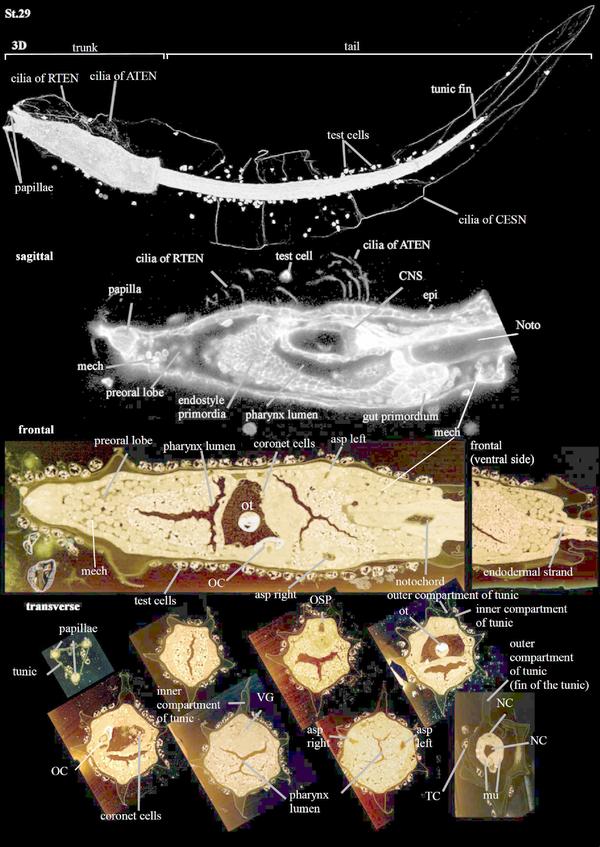
Stage 29
This is the Late Swimming Larva Stage (CirobuD:0000052; 22-24 h). With respect to the previous stage, the trunk is longer and narrower, and the tail is longer. Moreover, the trunk profile is squared at the trunk-tail transition (C-CI); in cross-section, the trunk and its tunic (tun) are polygonal and star-shaped, respectively. All of the larval structures for swimming are fully mature: the tunic fin (CirobuA:0000622) located along the dorso-ventral axis, the tail muscle (CirobuA:0000739) fibers, and the tunic ciliated sensory fields (ATEN, DCEN; RTEN, and VCEN ;Terakubo et al., 2010; Yokoyama et al., 2014). In Ciona, the larva swims by tail locomotion for several hours. The gravitaxis and visual behaviors are tightly interconnected at this stage (Bostwick et al., 2020). The duration of the swimming period is variable among individuals. In our observations, it lasts until 23.6 hpf on average, i.e., until the adhesion at the beginning of metamorphosis.
The gut primordium (synonym: “gut rudiment”; CirobuA:0000862) is histologically recognizable as endodermal tissue posterior to the pharynx. Here, the protostigmata (CirobuA:0000870) rudiments are now recognizable (Nakazawa et al., 2013). According to Hirano and Nishida (2000), in Halocynthia roretzi, the atrial epithelium develops from A7.2, A7.1, A7.5, and B7.1 cell lines. It gives rise to the paired atrial siphons (CirobuA:0000366), not yet in communication with the atrial cavities (CirobuA:0000798).